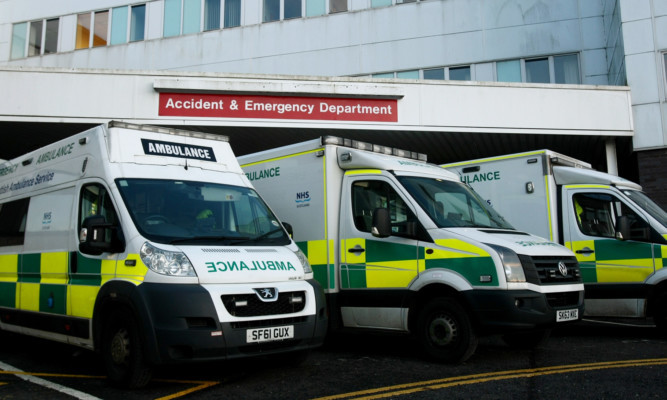Accident and emergency waiting time targets were missed again in January.
New figures show 87.1% of patients were seen over the month and subsequently admitted, transferred or discharged within four hours.
During the month, 3,215 people (3%) spent more than eight hours in A&E, and 703 people (0.6%) spent more than 12 hours in the department.
Scottish Government targets are for at least 95% of A&E patients to be seen within four hours.
For the first time, weekly waiting times have also been published.
They cover total attendances and waiting times for the 32 emergency departments in Scotland’s major hospitals.
More than 80% of accident and emergency activity currently takes place in these departments.
Between February 16 and 22, 86.1% of people were seen within four hours at “core sites”, slightly up on the comparable monthly figure for January which shows 85.4% of people were seen within four hours at core A&E sites.
The weekly figures also show that 689 patients (2.7%) spent more than eight hours in the department, and 187 patients (0.7%) spent more than 12 hours.
They show that 10 out of 14 health boards are continuing to see nine out of 10 patients within four hours, with six seeing 95% of patients within this time-frame.
The Scottish Government announced it would publish weekly waiting time figures following sustained pressure from Labour at Holyrood, with opposition MSPs arguing weekly publication of the statistics in England has revealed problems in A&E departments south of the border.
Until recently, the figures in Scotland had only been published every three months, with monthly publication introduced earlier this year.
Health Secretary Shona Robison said: “Staff in Scotland’s NHS are continuing to do a fantastic job to treat people as quickly as possible.
“This winter has been a very challenging time with an increase in attendances and admissions, as well as more severe flu-related illnesses and treating more people with complex illnesses.”
She added: “Today’s A&E waiting time figures are on a par with those in NHS England, and far exceed those in NHS Wales and Northern Ireland.
“However, they do not meet the demanding, world-leading targets we have set and the standards that patients should rightly expect.
“We are determined to improve performance through a whole system approach, improving patient flow throughout their journey from admission to discharge.
“While weekly figures show 10 out of 14 health boards are treating around nine out of 10 A&E patients within four hours we are seeing particular strain on hospitals in the west, with NHS Ayrshire and Arran and NHS Greater Glasgow and Clyde falling below the national average for both weekly and monthly figures.
“To tackle this we are targeting £5 million from our £31.5 million Performance Fund to drive forward improvement across NHS Greater Glasgow and Clyde to relieve pressure at the front door of the hospital. This is in addition to the support team put into the Royal Alexandra Hospital, which is now using its learning across the health board.”
